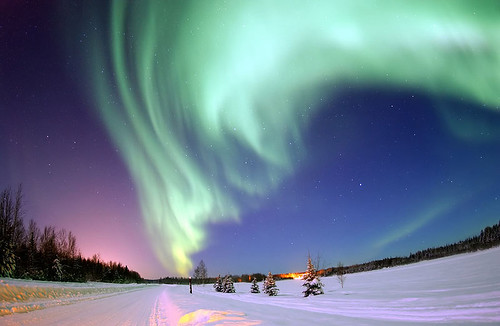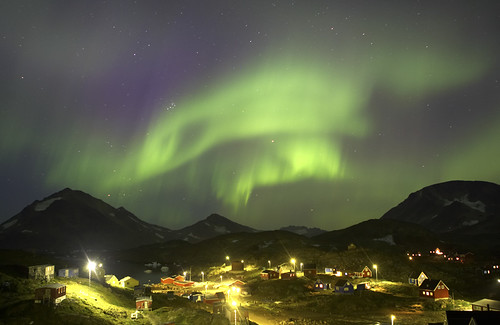Surely one of the most impressive natural spectacles are the Northern Lights. Auroras are brightness in the sky that appear at the time of sunrise or sunset at polar latitudes.

Photography by Image Editor
Scientifically, the aurora borealis occurs when a set of solar mass, which comes in powder form, strikes north and south poles of the Earth’s magnetosphere, producing a diffuse but predominantly projected in the Earth’s ionosphere.
Places to observe the aurora borealis:
The northern lights, as are known, are more likely to be between September and April, mainly because that is when there is less light and is more likely to see the Northern Lights. The solar dust can come at any day of the year, but it is only possible to see the spectacle of the Northern Lights with the dark without light pollution. Auroras take their maximum brightness at midnight. The best places to see Aurora Borealis Canada, Alaska and Greenland. The combination of accessibility and weather makes the south of Greenland is especially suitable in September to observe, and often exhibit many clear nights. Keep in mind that during most of summer sun barely sets, and no clarity in the sky, the Midnight Sun. It is also possible to see auroras in northern Scandinavia, especially in the northernmost part of Norway, Sweden and Finland. But in these countries, the weather conditions are not appropriate.

Photography by Image Editor
Tips for observing and photographing the northern lights:
Check the weather forecast to be in the area where you go to see the northern lights as a cloudy night prevent you from seeing them. Remember that the Northern Lights are transients in complex prediction, especially with more than a few days. You can never guarantee that the Sun is active or that the sky is clear.
Fall and spring are the best times to see the northern lights because of the amount of available evening hours and higher temperatures compared with winter in latitudes where you can see the northern lights.
To photograph the Northern Lights using a tripod and wide. We also recommend using exposure times between 10 and 30 seconds with low ISO for not getting too much noise.
If you take pictures in winter, remember that picture camera and its battery must withstand temperatures below -30 º C. Also remember to charge your battery, because that is downloaded faster freezing temperatures. Try to avoid the full moon or the moon on the horizon too high.

Photography by nick_russill
When there has been a spectacular aurora borealis, the solar rotation, the 27 days we can meet again with another spectacular aurora borealis. Also remember that every 11 years there are more solar activity.
And if you make a good photo of aurora borealis, send it to us and we will publish.
Leave a Reply
You must be logged in to post a comment.
Recent Comments